Problem:
• Preterm birth complications are the leading cause of death among children under 5 years of age, responsible for nearly 1 million deaths in 2013.
• Neonatal incubators are very limited and unavailable in rural areas.
• Preterm birth children are more susceptible to critical conditions like Hypoxia and Apnea
• Risky methods like use of incandescent bulbs are used in rural Primary healthcare centres
• Long term vitals monitoring is really uncomfortable in existing systems and may cause skin irritation to the neonate
Existing Systems:
• GE Healthcare
-
Lullaby baby-warmer
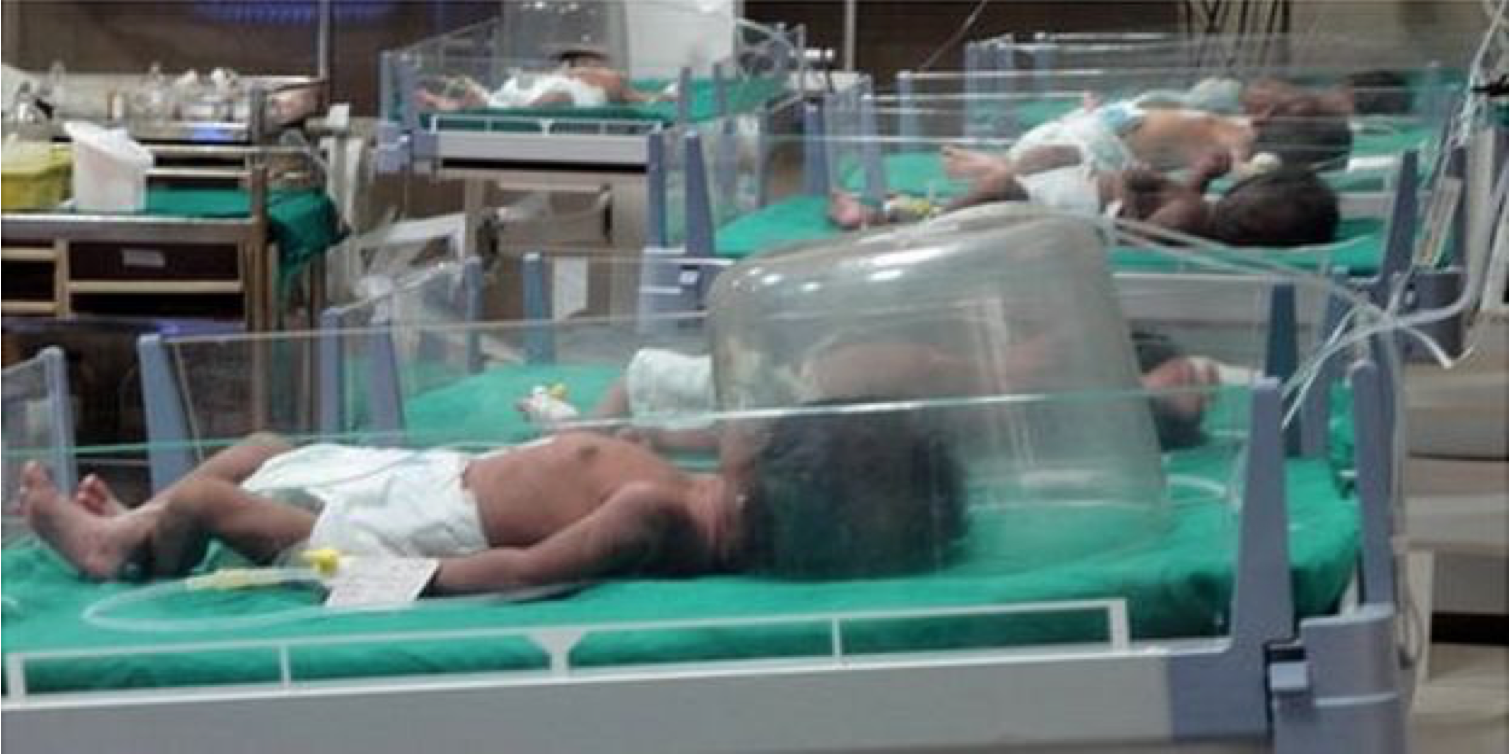 Pro's:
Pro's:
- Ease of use
- Uniform heat distribution
Con's:
- Stationary unit
- Expensive in comparison to other solutions
• Embrace
Pro's:
• Inexpensive (25$)
• Doesn't require power
Con's:
• Passive in nature
• Cannot detect emergency situations like Hypoxia(Lack of oxygen)
Background:
I, Vignesh am a final year engineering student from Chennai, India. I've always been into biomedical sensing and combining electronics and biomedical engineering.
Inspired after playing Deus Ex: Human Revolution as a 16 year old, My adolescent my mind was blown away by the possibilities in front of me. Reading about the work done by Dr.Hugh Herr at the Biomechatronics lab and Dr.Rosalind Packard at the Affective Computing lab MIT media lab. I realized I wanted to work on wearable sensors, After seeing the unbelievable progress in Machine Learning for the past few years empowering doctors with Machine Learning for diagnostics is my current goal. Along the way I've read statistics on pneumonia and wanted to do my path, I've also been forming a team to aid us in this.
Manoj Kumar is my partner in crime and works on firmware, The "Manoj" heads the design in our team.
Solution:
ADITI: Affordable Diagnostics Infused Textile Incubator
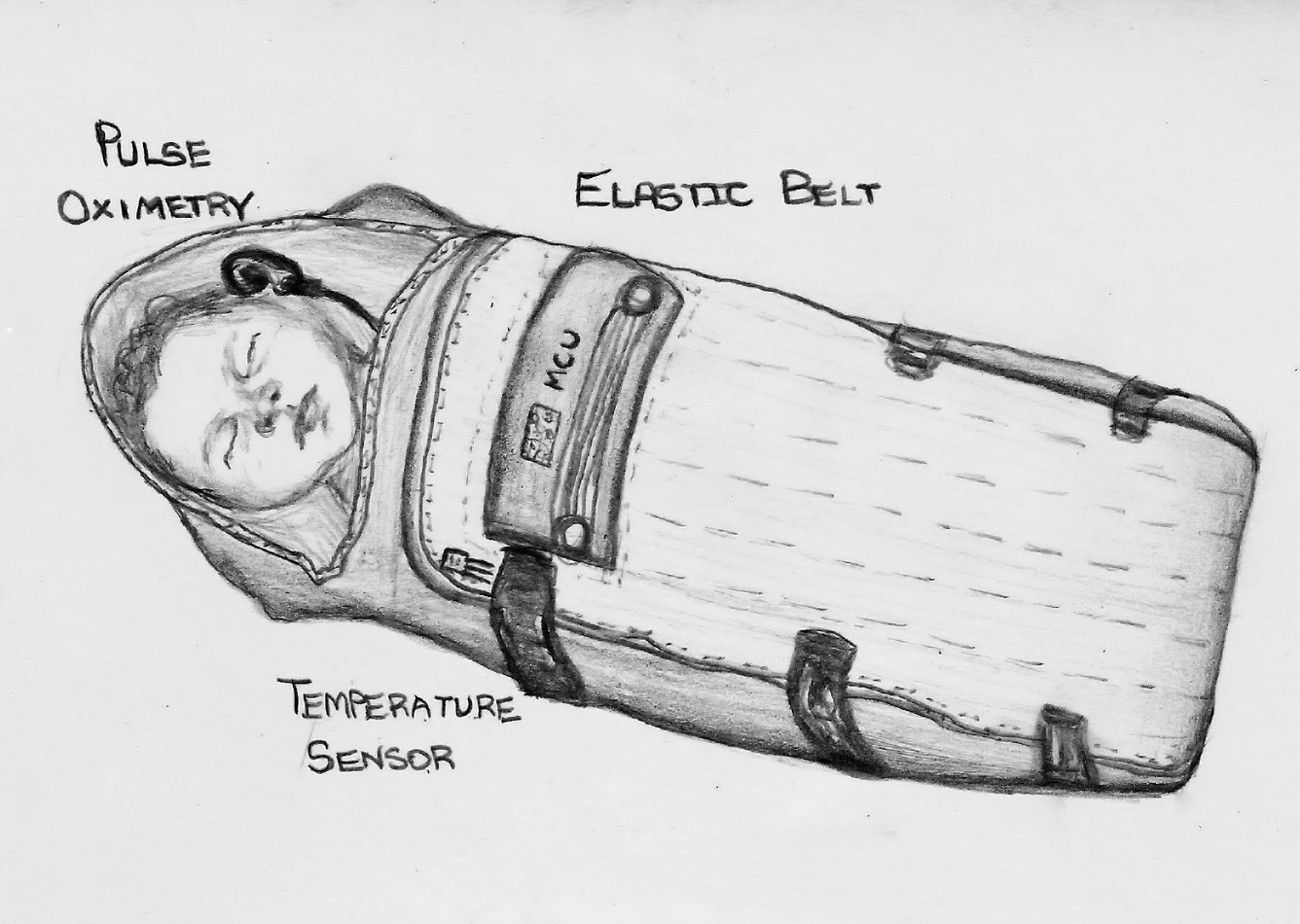
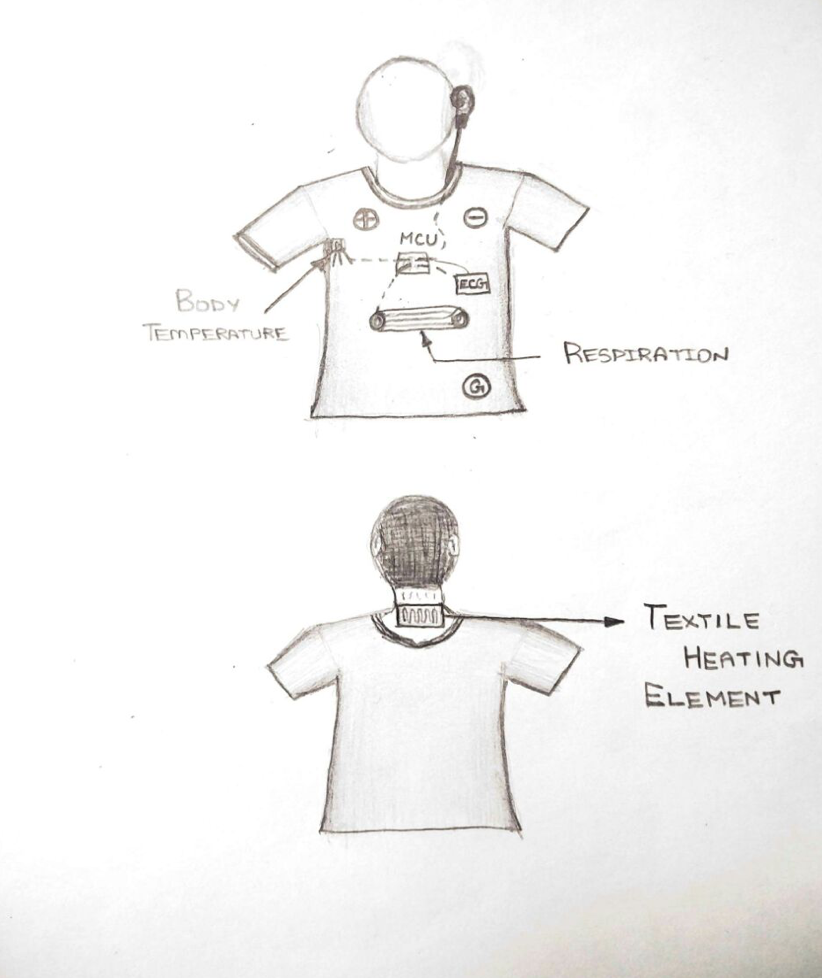
Our solution is a smart infant bodysuit that consists of fabric based resistive filaments that safely
provide warmth to the neonate as due to preterm birth body is fat is miniscule. The heating is
carefully controlled and will use PID control for accurate temperature control.
Comfortable textile based electrodes monitor ECG, Respiration Rate.
Pulse oximetry would be integrated with the baby's hoodie and would measure the oxygen
saturation in blood in the earlobe. Hypoxemia and Apnea can be detected early using Respiration
and Blood Oxygenation data to trigger alerts.
The wearable would also provide peace of mind to a parents who in many preterm cases are
extremely stressed. The device can potentially be the only incubation system in remote villages
where standard Neonatal incubators may not be available.
The system would be distributed in remote areas through Community Healthcare workers in a
rental model and in urban areas it would be post discharge rental system through hospitals.
System Design:
Respiration Rate Sensing:
![]() Teammate wearing the eeonyx fabric belt
Teammate wearing the eeonyx fabric belt
![]() Eeonyx fabric respiration sensor
Eeonyx fabric respiration sensor
•Use of piezoresistive fabric sensor to detect expansion and contraction of diaphragm
•Wheatstone network to measure change in resistance accurately
•Low cost and comfortable compared to Impedance pneumography
Heart Rate and Blood Oxygenation sensor:
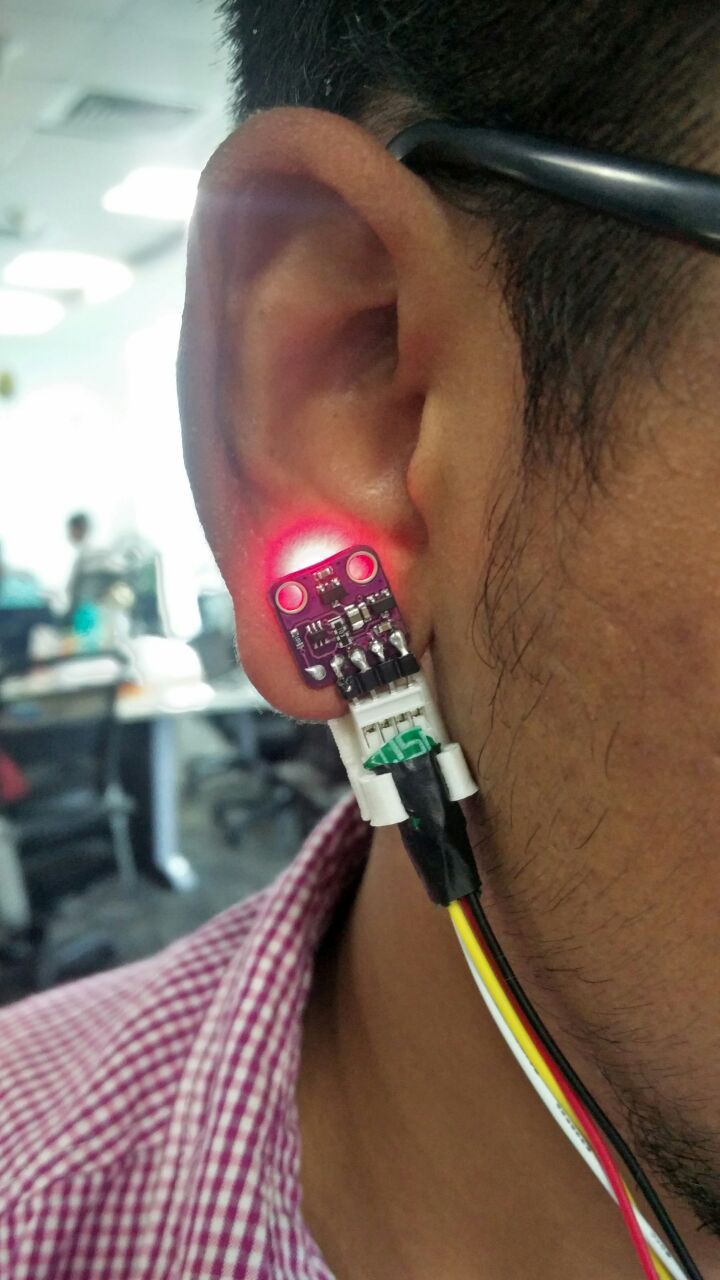
MAX30100 sensor along with a 3d printed clip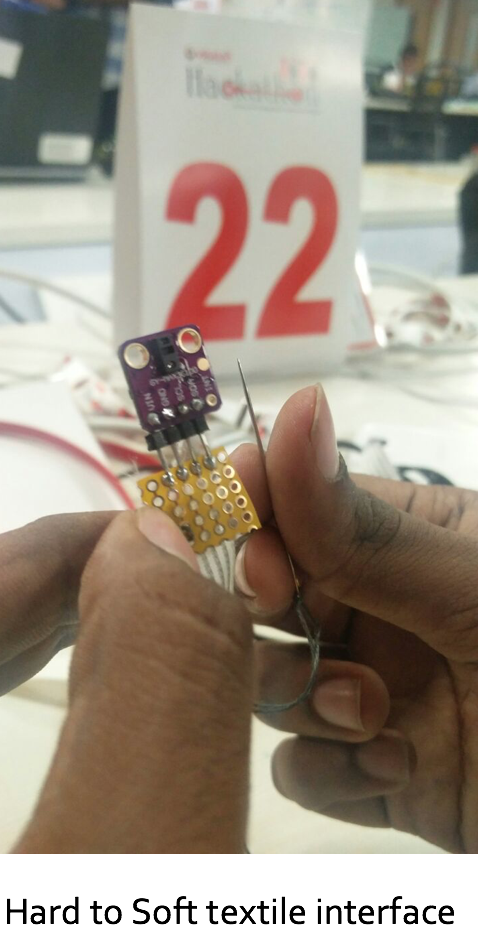
Inspired by Leah Buechley's work on etextiles
Photoplethysmography (PPG) and Pulse Oximetry (SpO2) are carried out by a single sensor which is used to measure reflectance of two LEDs of different wavelengths. SpO2 is found by measuring the reflectance of 650 nm light in comparison with 940 nm light. We are currently using the Maxim Semiconductors MAX30100 to reduce the size, cost. The sensor has an integrated amplifier, Analog to Digital Converter (ADC) and inbuilt LED's and LED drives (940nm,650nm).
We are working on etextile based system using a 4-channel conductive Textile Ribbon to comfortably transmit the data.
Body Temperature sensor:
![]()
The body temperature was also measured nonobtrusively by checking the armpit canal temperature using the LM35 temperature...
Read more » Manoj kumar
Manoj kumar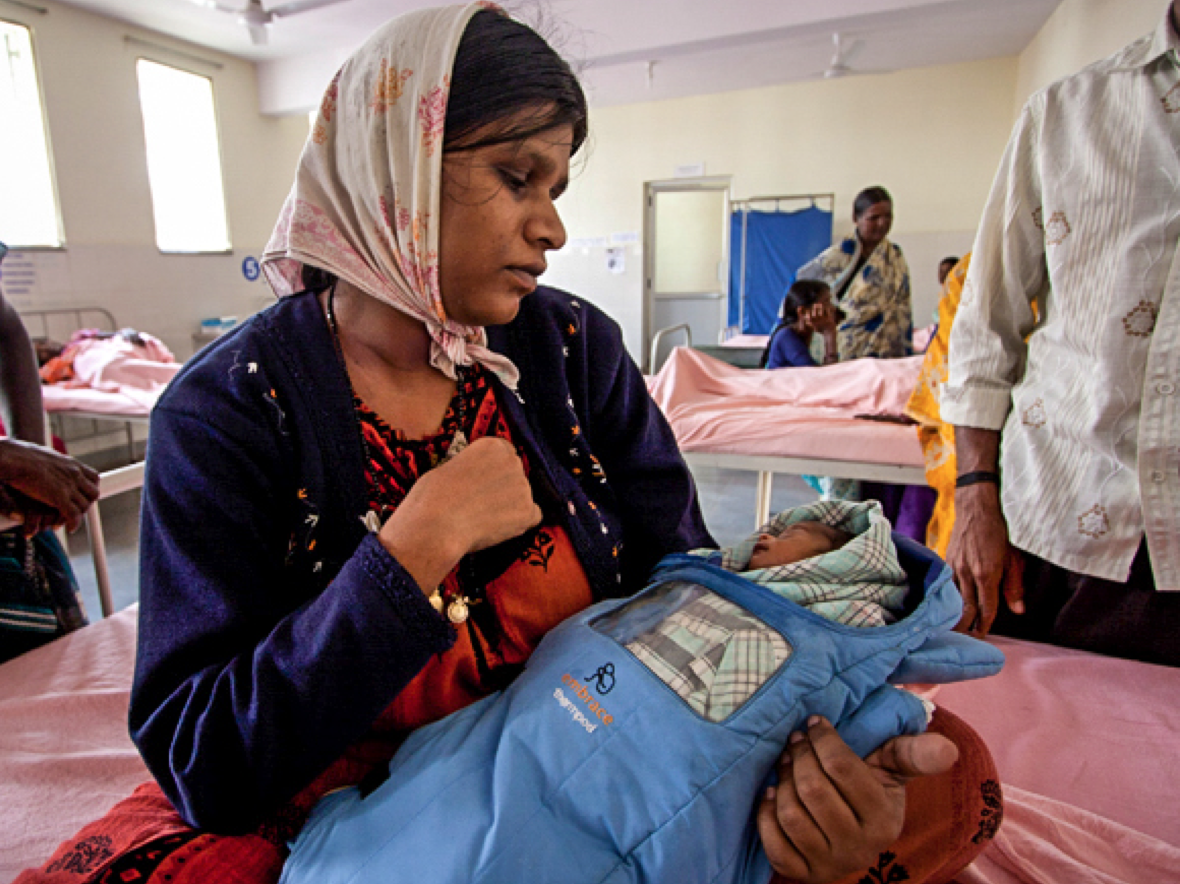
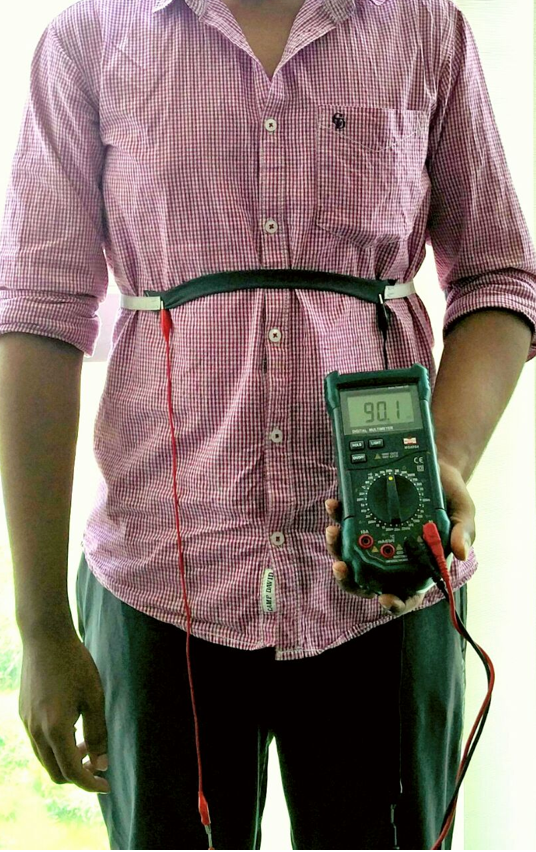 Teammate wearing the eeonyx fabric belt
Teammate wearing the eeonyx fabric belt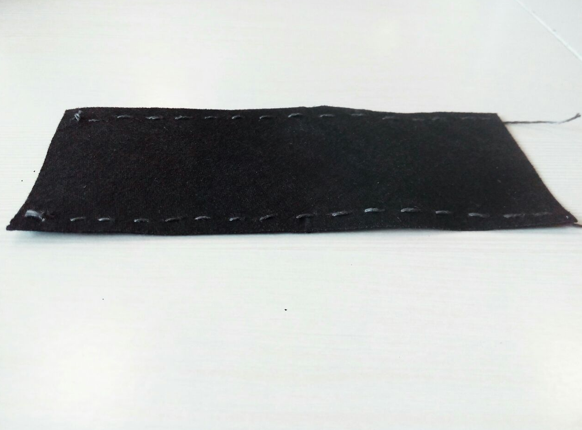 Eeonyx fabric respiration sensor
Eeonyx fabric respiration sensor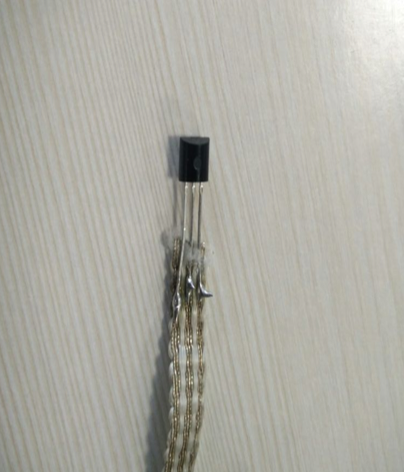

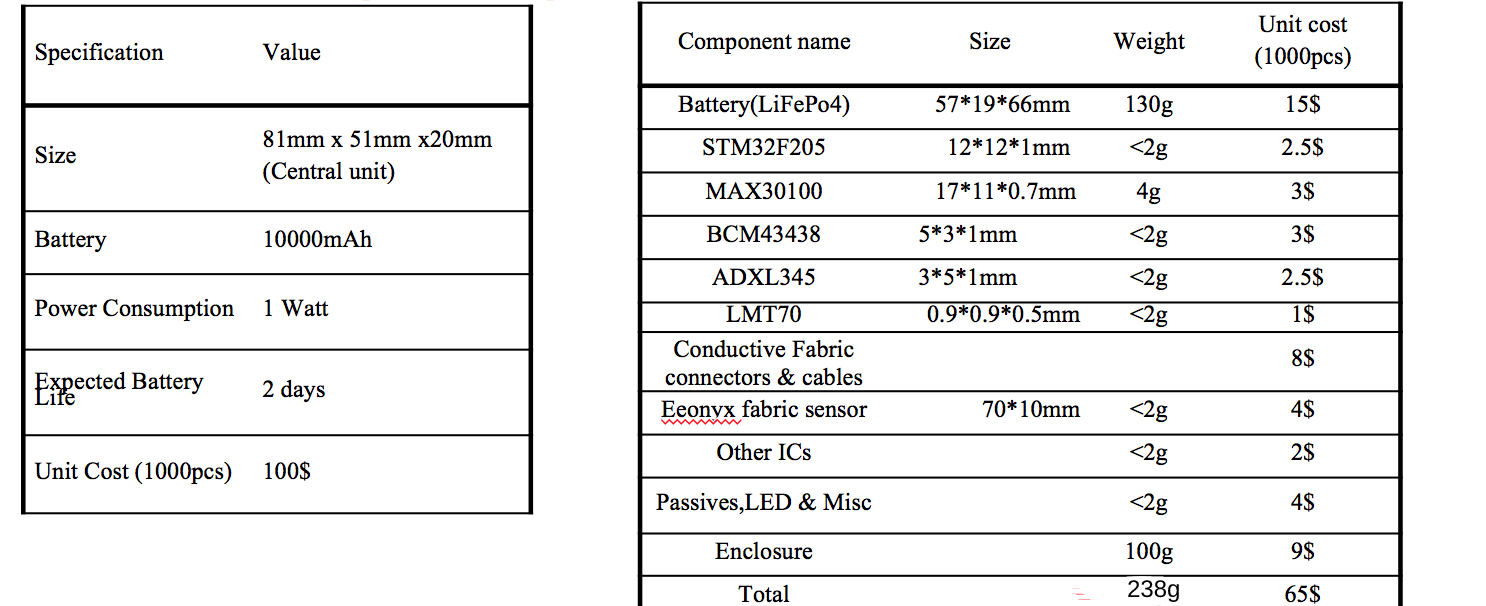
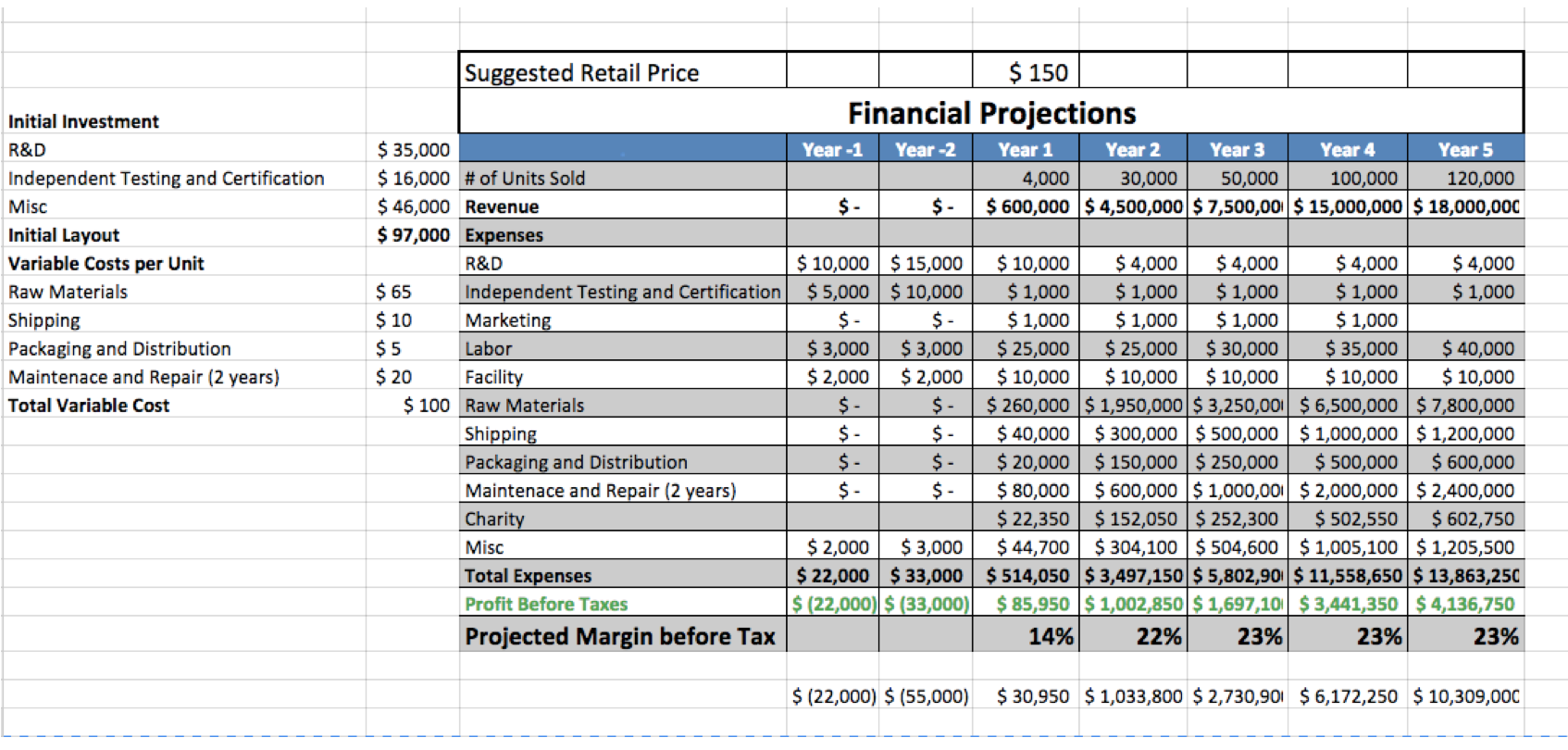
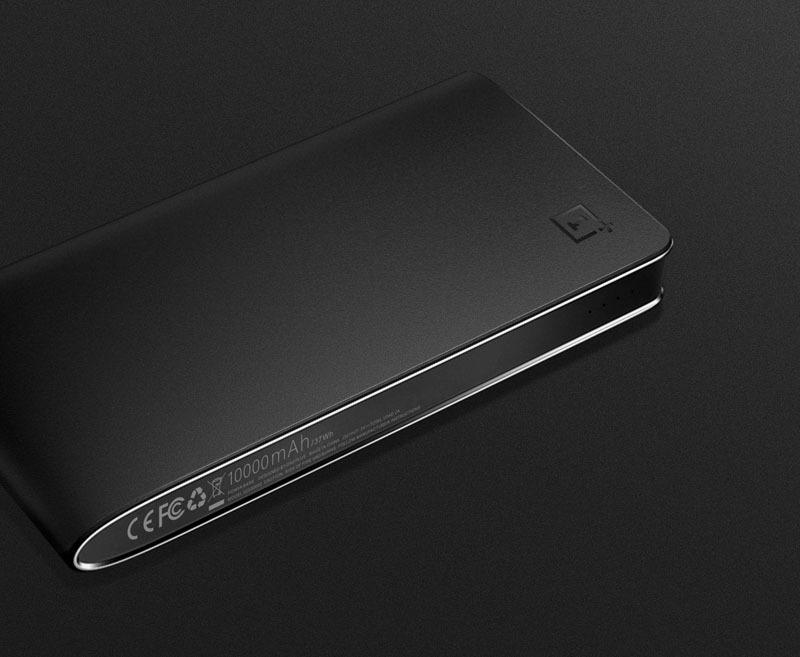

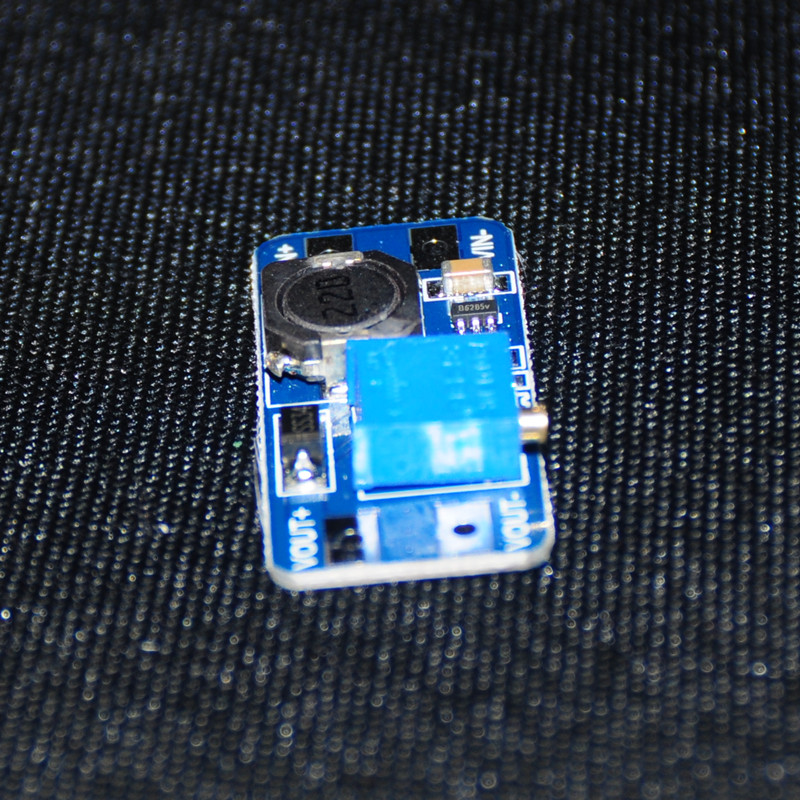 The net current consumption (Including sensor&MCU power) was about 550mAh with the heater on and total power consumption was a 2.75W.
The net current consumption (Including sensor&MCU power) was about 550mAh with the heater on and total power consumption was a 2.75W. 

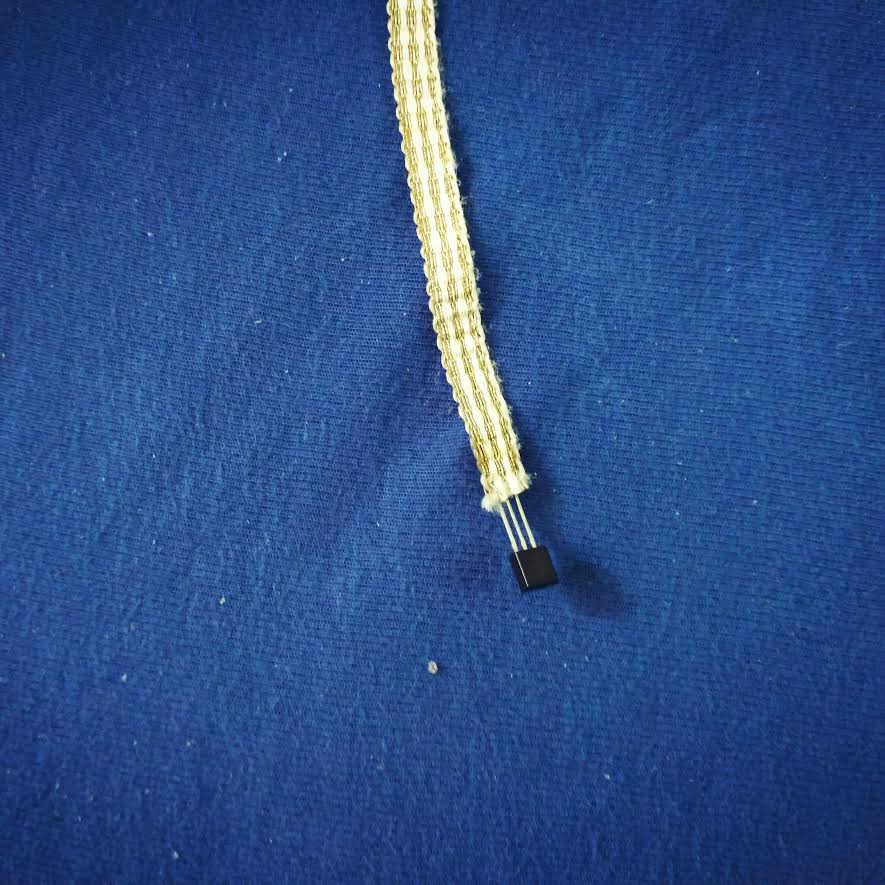
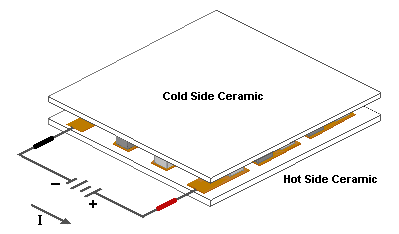
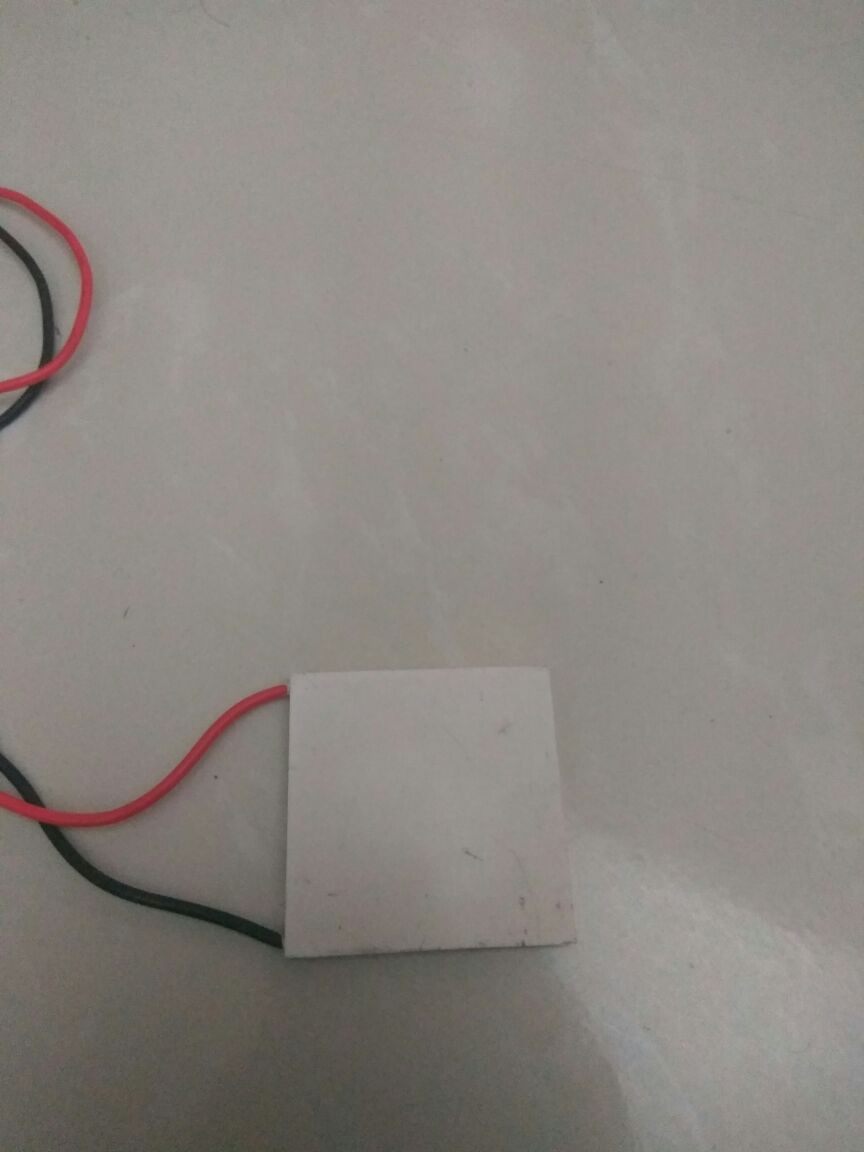
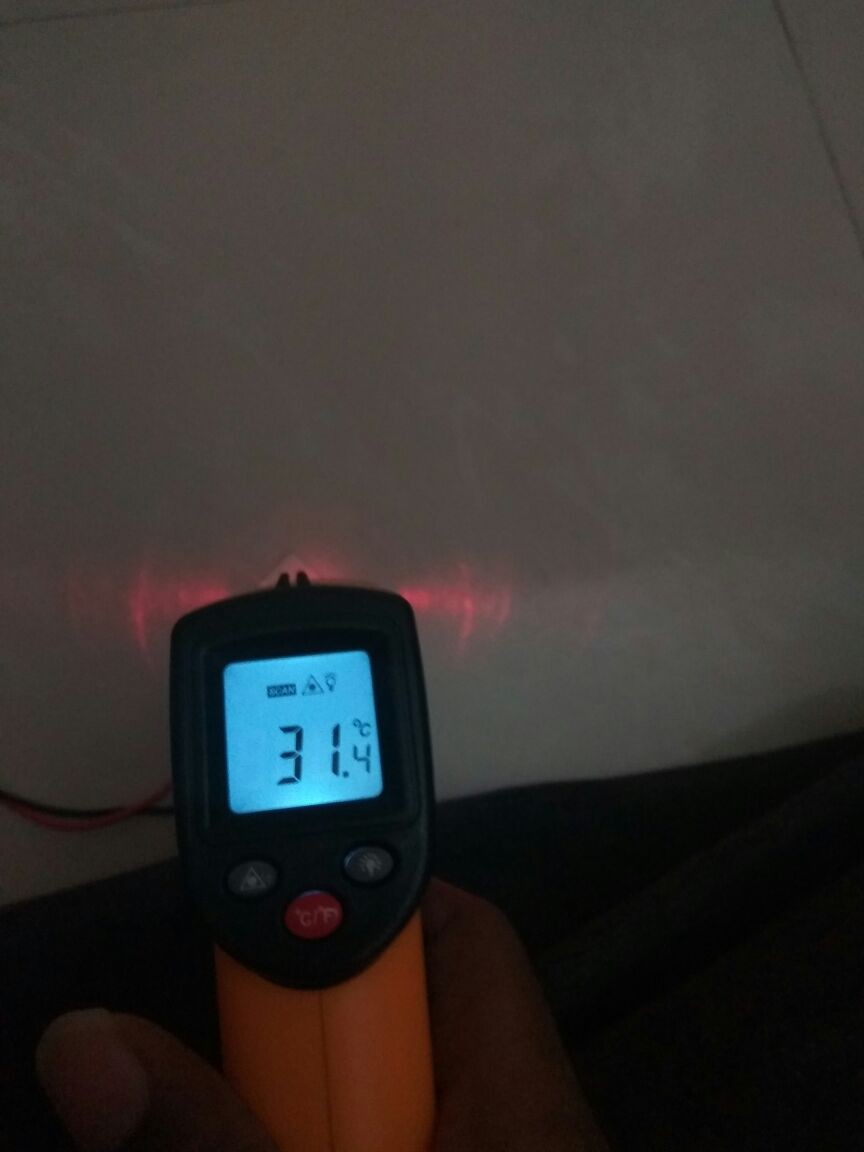
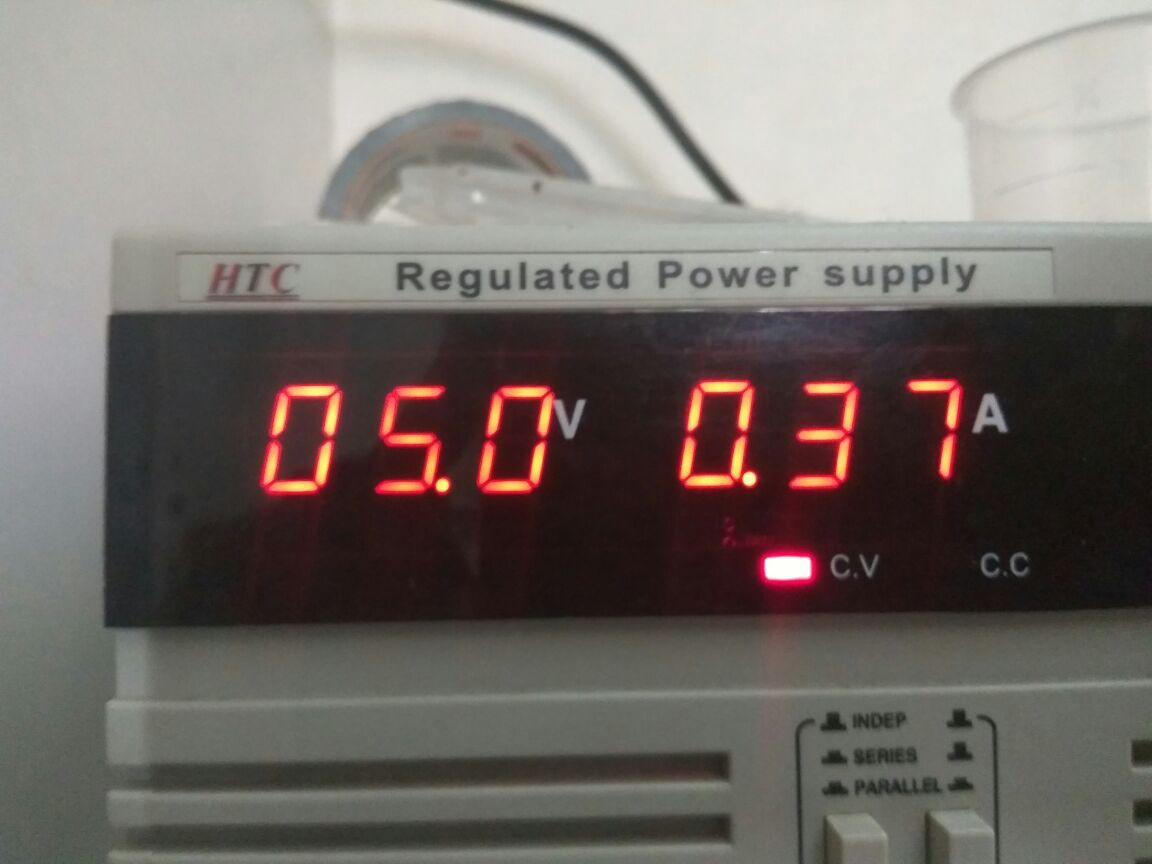
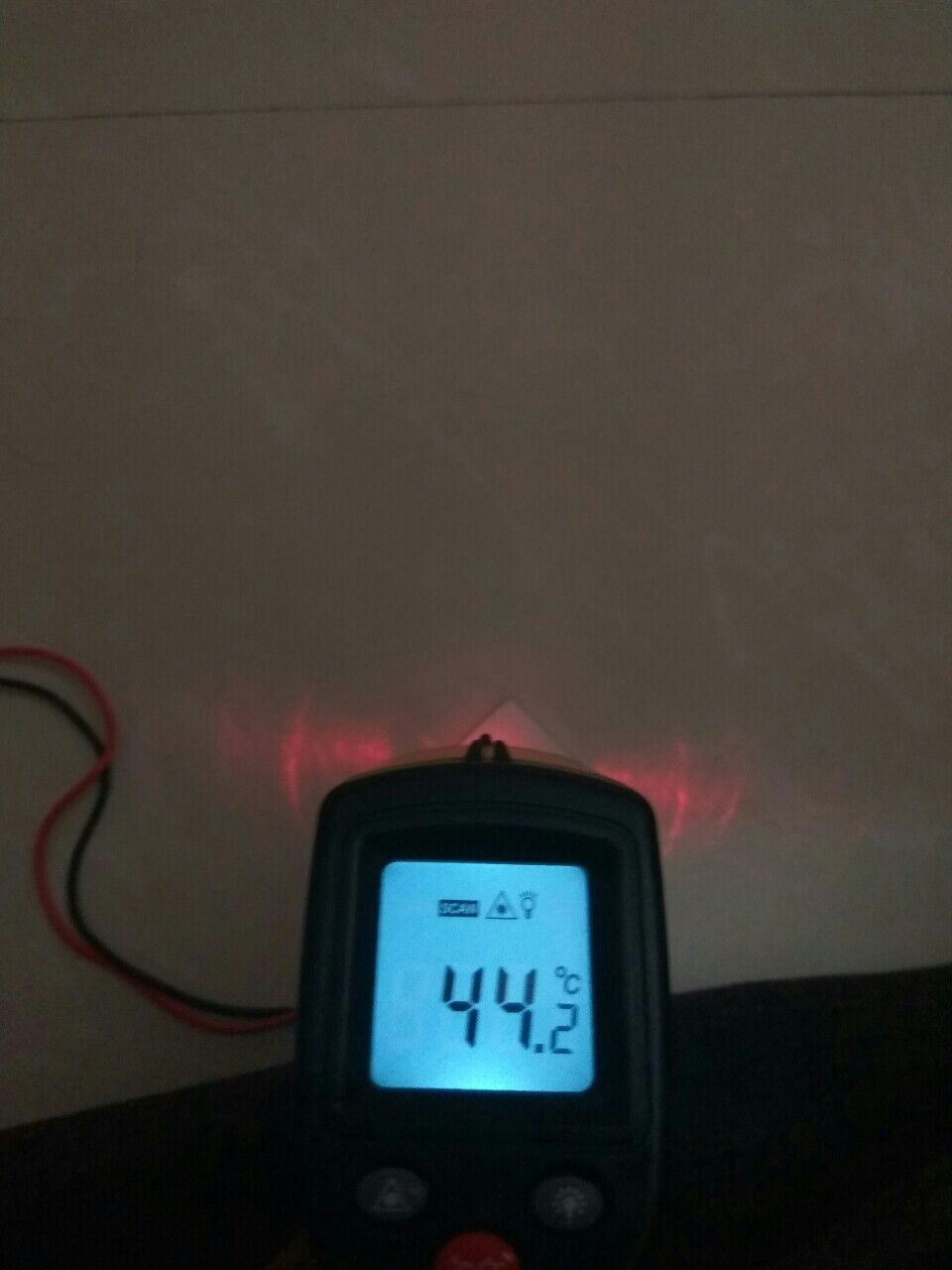
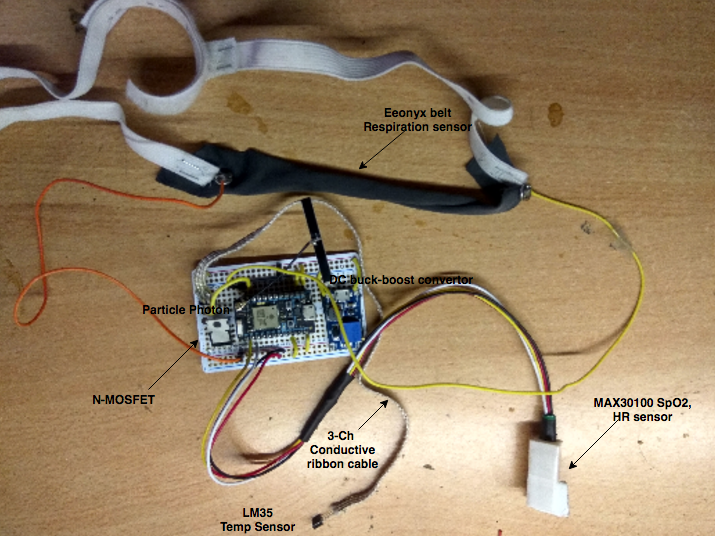
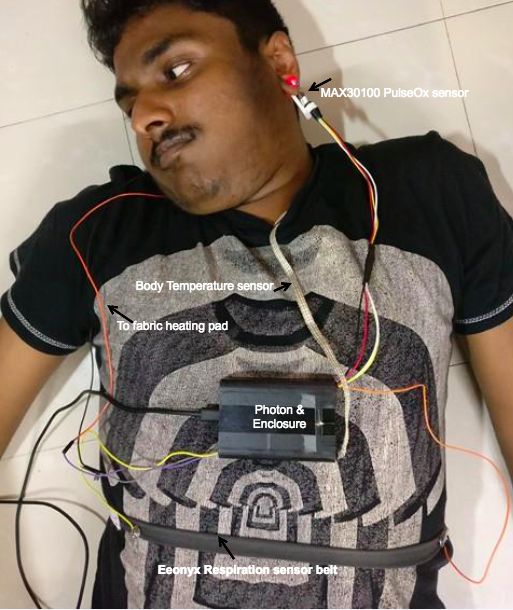
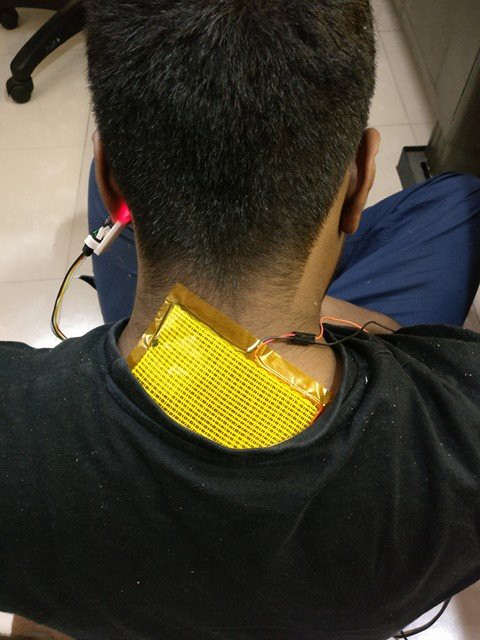
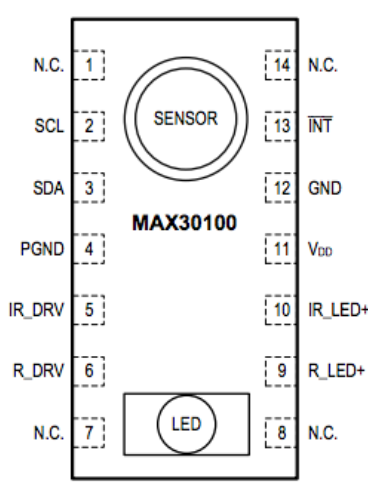
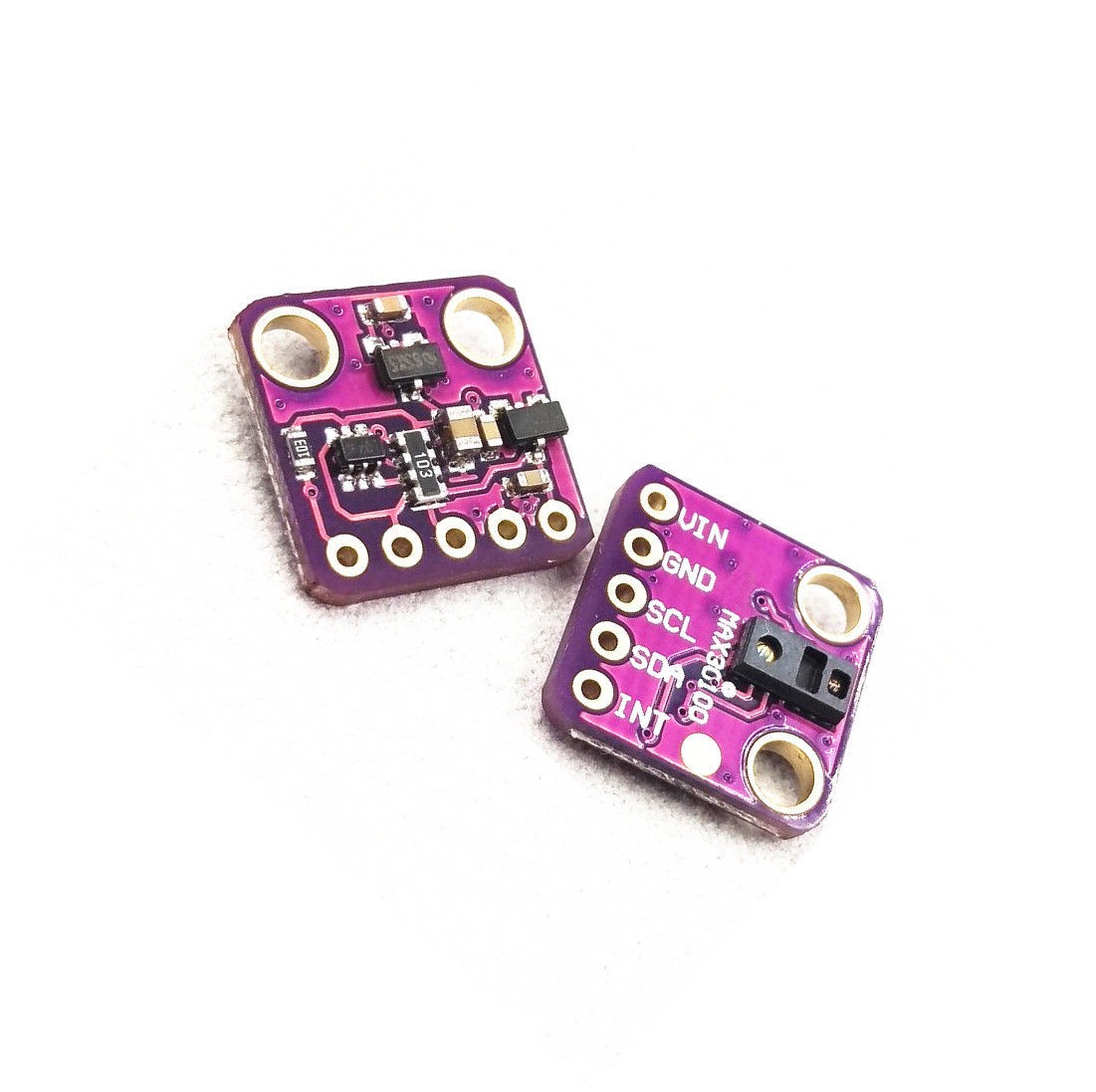
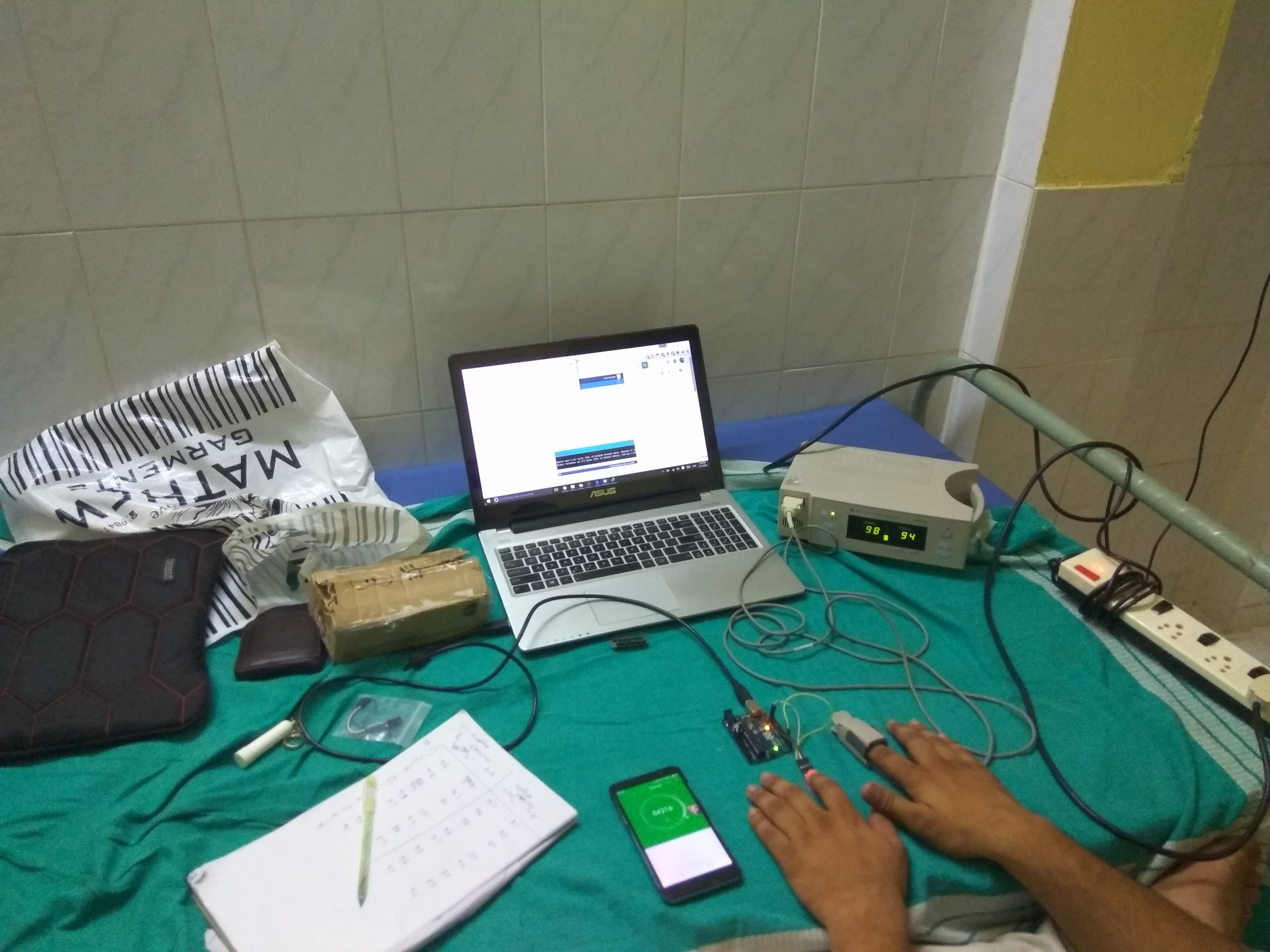 I had it compared against a Nellcor NBP-290 commercial medical grade pulse ox sensor.
I had it compared against a Nellcor NBP-290 commercial medical grade pulse ox sensor.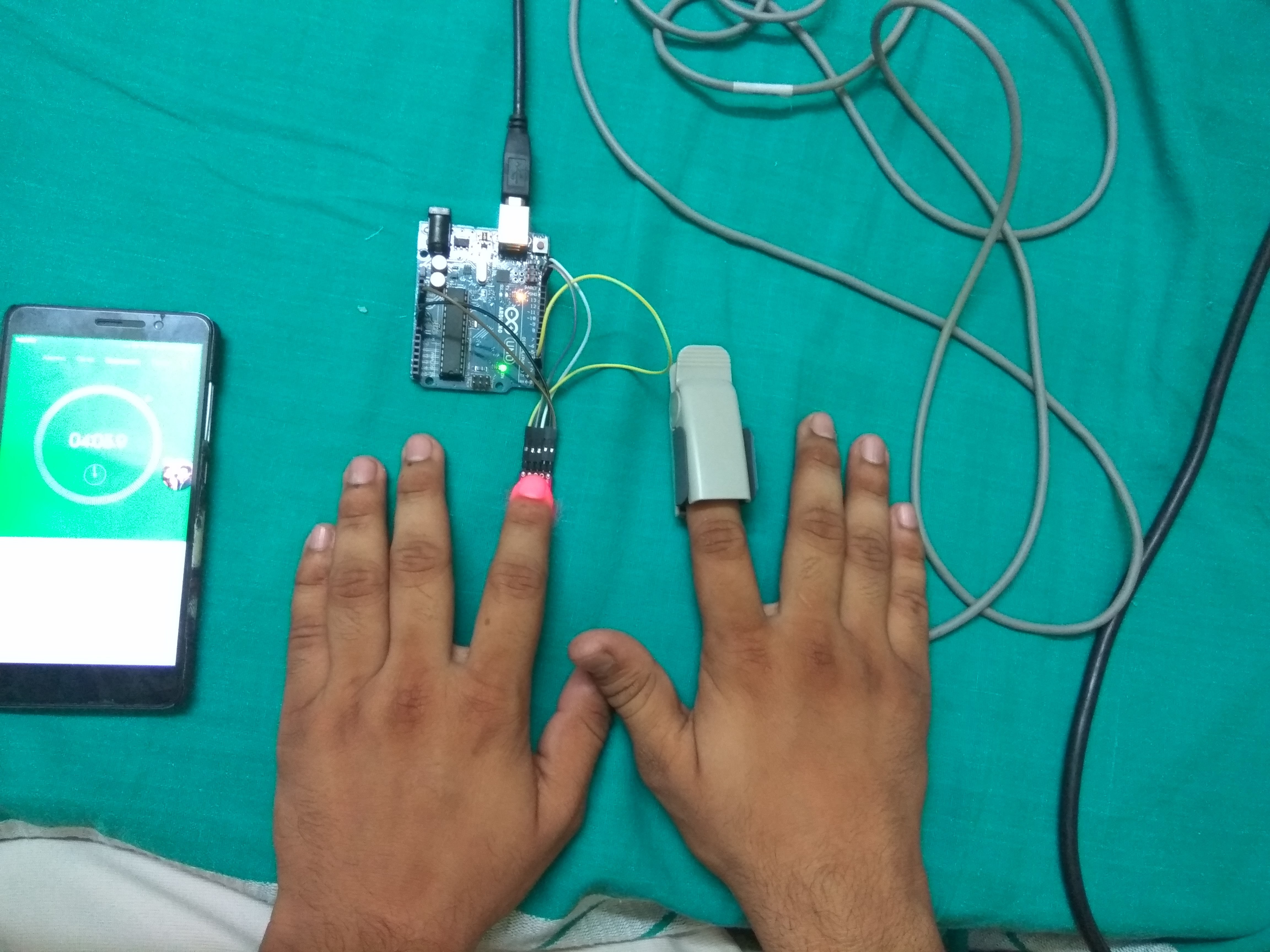
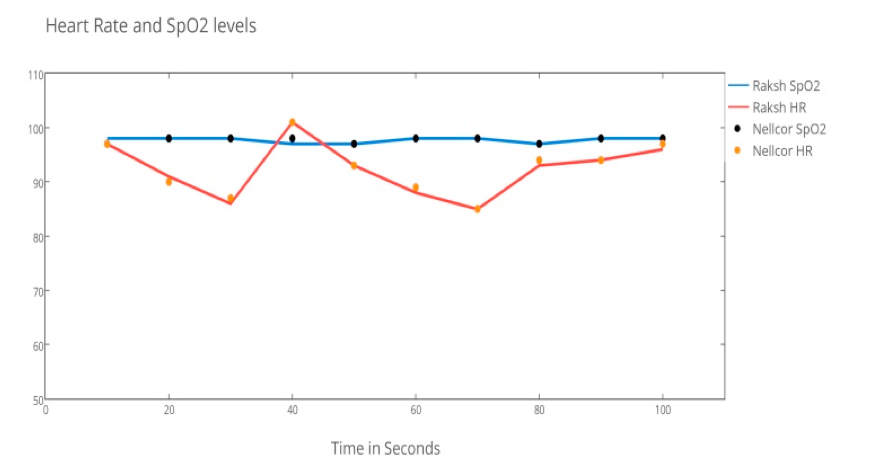
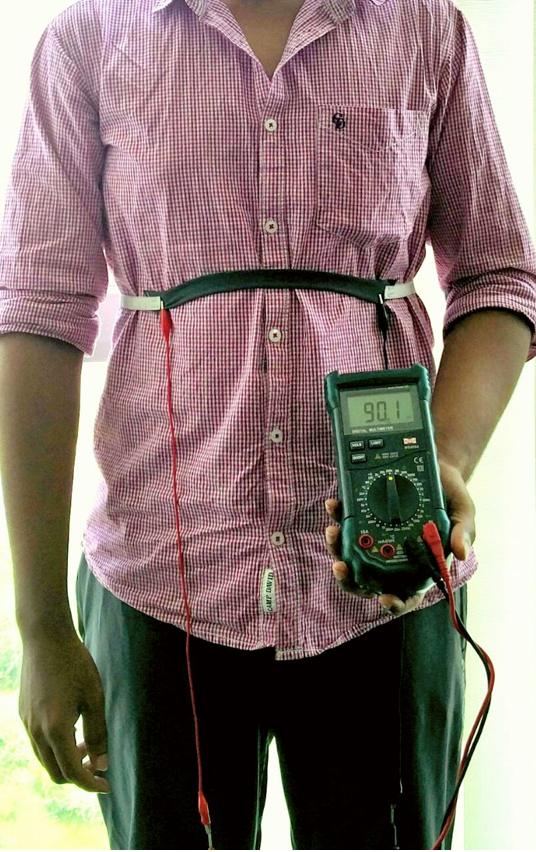

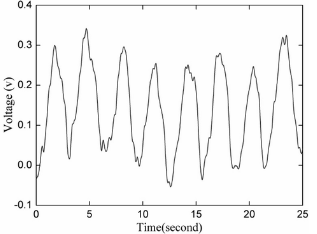


Looks awfully close to this: http://warmilu.com/infant-warming-solutions/